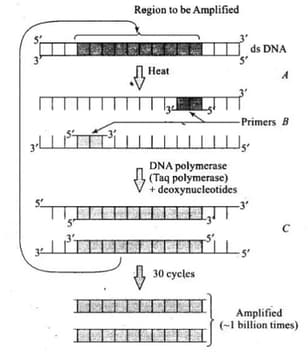NCERT Solutions for Chapter: Biotechnology: Principles and Processes, Exercise 3: SHORT ANSWER TYPE QUESTIONS
NCERT Biology Solutions for Exercise - NCERT Solutions for Chapter: Biotechnology: Principles and Processes, Exercise 3: SHORT ANSWER TYPE QUESTIONS
Attempt the practice questions on Chapter 11: Biotechnology: Principles and Processes, Exercise 3: SHORT ANSWER TYPE QUESTIONS with hints and solutions to strengthen your understanding. NCERT Exemplar Biology - Class 12 solutions are prepared by Experienced Embibe Experts.
Questions from NCERT Solutions for Chapter: Biotechnology: Principles and Processes, Exercise 3: SHORT ANSWER TYPE QUESTIONS with Hints & Solutions
A plasmid DNA and a linear DNA (both are of the same size) have one site for a restriction endonuclease. When cut and separated on agarose gel electrophoresis, plasmid shows one DNA band while linear DNA shows two fragments. Explain.
How does one visualise DNA on an agarose gel?
A plasmid without a selectable marker was chosen as vector for cloning a gene. How does this affect the experiment?
A mixture of fragmented DNA was electrophoresed in an agarose gel. After staining the gel with ethidium bromide, no DNA bands were observed. What could be the reason?
Describe the role of CaCl2 in the preparation of competent cells.
What would happen when one grows a recombinant bacterium in a bioreactor but forget to add antibiotic to the medium in which the recombinant is growing?
Identify and explain steps 'A', 'B' and 'C' in the PCR diagram given below.

Name the regions marked A, B and C.

